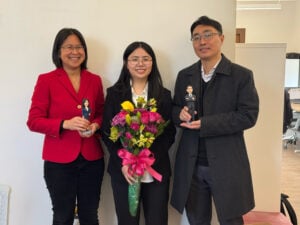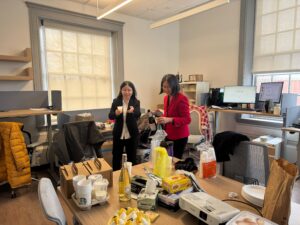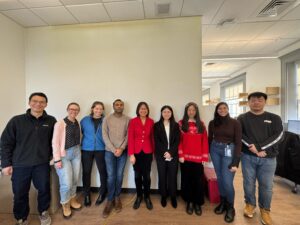





Viscoelastic Behavior and Energy Absorption of Main-chain Liquid Crystal Elastomers-Based Architected Materials
Beijun Shen
Energy absorption is essential in designing materials and structures for impact mitigation, vibration isolation, and energydissipation. Architected materials leveraging geometric instabilities, such as snap-through buckling, are effective at reversibly trapping energy but often lack strain rate sensitivity. Liquid crystal elastomers (LCEs), crosslinked polymer networks with stiff, rod-like mesogens, present a unique opportunity for integrating rate-dependent dissipation mechanisms. LCEs exhibit superior energy dissipation due to the coupling between viscoelastic network deformation and anisotropic mesogen reorientation, enabling properties such as soft elasticity and significant hysteresis.
This dissertation explores the synergy between the viscoelasticity and soft elasticity of LCEs and the energy-trapping mechanisms of instability-based architected materials to enhance energy absorption.
- The first part examined the combined effect of viscoelastic dissipation and snap-through buckling in a lattice structure under compressive loading. Finite element simulations employing a large-deformation viscoelastic constitutive model for the LCEs showed that energy absorption density increased with strain rate. For instance, at ~0.5/s, LCE-based structures absorbed four times more energy than their PDMS counterparts. Stacked LCEstructures exhibited nonuniform buckling, amplifying viscoelastic dissipation.
- The second part focused on the finite-strain viscoelastic behavior of monodomain LCEs under uniaxial tension.Experimental characterization and computational modeling of LCEs based on a nonlinear viscoelastic framework revealed distinct behaviors of LCEs with different crosslinking densities. The simulation results showed that the more crosslinked LCEs exhibited greater contributions from elastic strain energy and polymer network dissipation compared to their less crosslinked counterparts, though director dissipation remained the dominant energy absorption mechanism in both cases.
- The final part explored the soft elasticity of monodomain LCEs as an additional energy dissipation mechanism in diamond-patterned structures. Finite element simulations and experiments highlighted the interplay between the viscoelastic buckling of angled LCE beams and the stretching of transverse LCE films, demonstrating substantial improvements in energy absorption.
- This dissertation provides critical insights into the application of LCEs in advanced energy-absorbing lattice structures, offering new opportunities for designing impact mitigation and energy dissipation structures.

